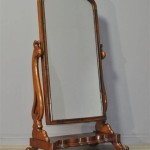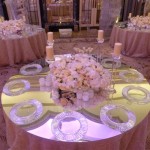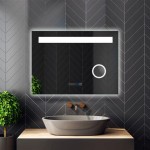Choosing the Right Glue for Mirrors at Home Depot
Mirrors enhance the aesthetic appeal of any living space, providing functional benefits such as reflecting light and creating the illusion of greater space. However, securely mounting a mirror requires careful consideration of the adhesive used. Home Depot offers a variety of glues and adhesives suitable for mirror installation, each possessing unique properties and applications. Selecting the appropriate product is crucial to ensure a lasting, damage-free installation. This article discusses the key considerations for choosing the right glue for mirrors at Home Depot, focusing on factors like adhesive type, substrate compatibility, application methods, and environmental conditions.
Understanding Different Types of Mirror Glues Available at Home Depot
Home Depot stocks several adhesive types that are marketed or suitable for mirror installation. These products vary in their chemical composition, bonding strength, and other characteristics. Understanding these differences is essential for making an informed decision.
Neutral Cure Silicone Adhesives: These silicones are a popular choice due to their versatility and compatibility with a wide range of surfaces. Neutral cure silicones, as opposed to acidic cure silicones, release non-corrosive byproducts during the curing process, making them safe for use with the silver backing of mirrors. Acidic cure silicones can degrade the reflective layer, leading to unsightly discoloration and eventual failure of the adhesive bond. Neutral cure silicones typically provide a strong, flexible bond that can withstand temperature fluctuations and vibrations. They are also resistant to moisture, making them suitable for bathroom installations. Look for products specifically labeled as "mirror adhesive" that utilize a neutral cure formula.
Construction Adhesives: Many construction adhesives are formulated to bond a variety of materials, including mirrors. These adhesives offer a high level of initial grab, reducing the need for extensive bracing during the curing process. However, it is crucial to carefully examine the product specifications to ensure compatibility with mirrors. Some construction adhesives may contain solvents or chemicals that can damage the mirror backing. Look for products that explicitly state "mirror safe" or "suitable for mirrors." Also, consider the adhesive's long-term flexibility. A rigid construction adhesive may not be ideal for applications where slight movement or vibration is expected.
Polyurethane Adhesives: Polyurethane adhesives offer exceptional bonding strength and durability. They are known for their resistance to water, solvents, and temperature extremes. However, polyurethane adhesives can expand during curing, which may cause issues if not applied correctly. Furthermore, some polyurethane adhesives can be difficult to remove if necessary. Due to these factors, polyurethane adhesives are typically not the first choice for mirror installation, unless specifically recommended for mirror applications by the manufacturer.
Acrylic Adhesives: Acrylic adhesives are water-based and generally considered low in VOCs (Volatile Organic Compounds). They offer a good level of adhesion and are relatively easy to clean up. However, acrylic adhesives may not be as strong or as durable as other adhesive types, particularly in high-humidity environments. They are often best suited for smaller mirrors or applications where a less permanent bond is desired. Always check the product label to confirm suitability for mirror installation.
When evaluating different adhesives, it's important to review the manufacturer's data sheet for specific information on bond strength, cure time, temperature resistance, and chemical compatibility. Pay close attention to any warnings or limitations related to mirror installation.
Key Considerations Before Applying Mirror Glue
Prior to applying any adhesive, several factors must be taken into consideration to ensure a successful and long-lasting installation.
Surface Preparation: Proper surface preparation is crucial for achieving a strong adhesive bond. Both the mirror backing and the mounting surface must be clean, dry, and free from any contaminants, such as dust, grease, or loose paint. The mirror backing can be cleaned with a soft cloth and a mild detergent, followed by a thorough rinsing and drying. The mounting surface should be cleaned with a suitable solvent or cleaner, depending on the material. Porous surfaces, such as drywall or plaster, may require priming to improve adhesion. Priming helps to create a uniform surface and prevents the adhesive from being absorbed into the substrate. Check the adhesive manufacturer's recommendations for specific surface preparation guidelines.
Mirror Size and Weight: The size and weight of the mirror will significantly influence the type and amount of adhesive required. Larger, heavier mirrors require a stronger adhesive and may necessitate additional mechanical support, such as clips or J-channels. The adhesive manufacturer's data sheet will typically provide information on the maximum weight-bearing capacity of the adhesive per square inch or linear foot. It is important to calculate the total weight of the mirror and ensure that the adhesive has sufficient capacity to support it. For very large or heavy mirrors, it is advisable to consult with a professional installer.
Substrate Compatibility: Not all adhesives are compatible with all surfaces. Some adhesives may bond well to drywall but poorly to tile or metal. It is crucial to select an adhesive that is specifically formulated for the materials being bonded. Home Depot provides detailed product information on their website and in-store, allowing customers to verify substrate compatibility. If unsure, conduct a small test application in an inconspicuous area to assess adhesion before applying the adhesive to the entire mirror.
Environmental Conditions: The environmental conditions at the installation site can also affect adhesive performance. Temperature and humidity levels can influence the curing time and bond strength of certain adhesives. Some adhesives may not be suitable for use in extremely hot or cold temperatures. High humidity can also interfere with the curing process. Check the adhesive manufacturer's recommendations for optimal application conditions.
Ventilation: Ensure adequate ventilation during and after adhesive application. Some adhesives release fumes during the curing process, which may be harmful to inhale. Open windows and doors to provide cross-ventilation. Wear appropriate personal protective equipment, such as gloves and a respirator, if necessary.
Application Techniques and Best Practices for Mirror Glue
Even with the correct adhesive and proper surface preparation, incorrect application techniques can lead to adhesive failure. Following best practices is essential for a secure and aesthetically pleasing mirror installation.
Applying the Adhesive: The recommended method for applying mirror adhesive typically involves applying vertical beads of adhesive to the back of the mirror. The beads should be spaced evenly apart and should not be applied too close to the edge of the mirror to prevent squeeze-out. The manufacturer's instructions will provide guidance on the appropriate bead size and spacing. Avoid applying a continuous layer of adhesive, as this can trap moisture and air, leading to adhesive failure and potential damage to the mirror backing. For larger mirrors, consider applying additional adhesive around the perimeter of the mirror for added support.
Bracing the Mirror: Once the mirror is in place, it is important to provide temporary bracing to hold it securely against the mounting surface while the adhesive cures. This can be accomplished using painter's tape, shims, or specialized mirror supports. The bracing should be applied evenly across the mirror to distribute the pressure and prevent distortion. The duration of the bracing will depend on the adhesive cure time, which is typically specified in the manufacturer's instructions. Avoid disturbing the mirror during the curing process.
Cure Time: The cure time for mirror adhesive can vary significantly depending on the type of adhesive, the temperature, and the humidity. It is essential to allow the adhesive to cure completely before removing the bracing or applying any stress to the mirror. Rushing the curing process can compromise the bond strength and lead to premature failure. Check the adhesive manufacturer's recommendations for the specific cure time.
Clean Up: Clean up any excess adhesive immediately after application using a suitable solvent or cleaner, as recommended by the adhesive manufacturer. Dried adhesive can be difficult to remove and may damage the mirror or mounting surface. Use a clean cloth and avoid using abrasive cleaners or tools.
Safety Precautions: Always follow the safety precautions outlined in the adhesive manufacturer's instructions. Wear appropriate personal protective equipment, such as gloves and eye protection. Avoid contact with skin and eyes. If contact occurs, flush immediately with water and seek medical attention if necessary. Keep adhesive out of reach of children.
By carefully considering the type of adhesive, surface preparation, application techniques, and safety precautions, homeowners can successfully install mirrors using products available at Home Depot, ensuring a secure and aesthetically pleasing result. Consulting the manufacturer's instructions and seeking professional advice when needed are vital steps in the process.

Loctite Pl 530 Mirror Marble And Granite 10 Oz Solvent Construction Adhesive Tan Cartridge Each 1693636 The Home Depot

Loctite Pl 530 Mirror Marble And Granite 10 Oz Solvent Construction Adhesive Tan Cartridge Each 1693636 The Home Depot

Loctite Pl 530 Mirror Marble And Granite 10 Oz Solvent Construction Adhesive Tan Cartridge Each 1693636 The Home Depot

Mirror Mastic 5013 The Home Depot

Loctite Pl 530 Mirror Marble And Granite 10 Oz Solvent Construction Adhesive Tan Cartridge Each 1693636 The Home Depot

Loctite Pl 530 Mirror Marble And Granite 10 Oz Solvent Construction Adhesive Tan Cartridge 12 Pack 1693636 The Home Depot

Glacier Bay 10 1 Oz Mirror Mastic Adhesive 82057 The Home Depot

Dap Rapidfuse 0 85 Oz Clear All Purpose Adhesive 01555 The Home Depot

Loctite Pl 530 Mirror Marble And Granite 10 Oz Solvent Construction Adhesive Tan Cartridge Each 1693636 The Home Depot

Loctite Extreme Glue 0 7 Oz No Drip Gel Adhesive Clear Tube Each 2596210 The Home Depot








